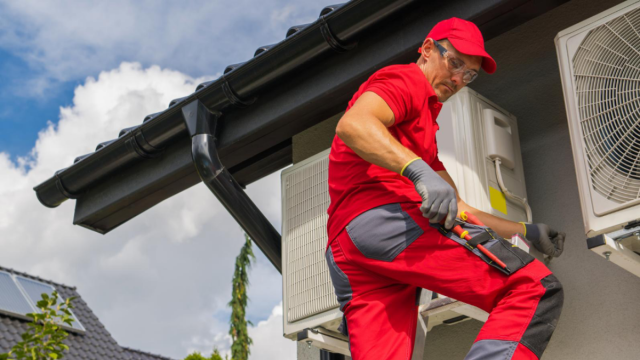Heating and cooling systems are essential to our modern-day lives, but they can also significantly impact the environment and our energy bills. As a result, more and more people are turning to energy-efficient heating and cooling systems that reduce their carbon footprint and save them money. This article will explore some of these systems, including electrically and thermally driven heat pumps, air source heat pumps, water source heat pumps, and ground source heat pumps. We will discuss how each system works, its benefits, and why it is worth considering as an alternative to traditional heating and cooling methods.
Electrically and Thermally Driven Heat Pump
Contents [show]
An electrically and thermally driven heat pump is a heating system that transfers heat from one place to another using electricity and thermal energy. Compared to traditional heating systems, it is more efficient and can reduce energy costs. Instead of generating heat directly, it moves heat from the outdoors to indoors during the winter and vice versa during the summer. This process can be further improved by using heat pump heat strips, which provide additional heating capability when the temperature difference between indoors and outdoors is too great for the heat pump to handle on its own.
Air Source Heat Pumps
An air source heat pump is a heating and cooling system that uses outdoor air as its heat source. It extracts heat from the air outside your home and transfers it inside to provide warmth during winter. During summer, the process is reversed to remove heat from inside your home and send it outside. This type of system is becoming increasingly popular due to its efficiency and the fact that it is environmentally friendly, as it does not rely on fossil fuels. Moreover, air-source heat pumps can help reduce energy costs and have a much smaller carbon footprint than traditional heating systems. If you want to upgrade your home’s heating and cooling system, an air-source heat pump is worth considering.
Ground Source Heat Pumps
A ground source heat pump, also known as a geothermal heat pump, is a renewable energy system that takes advantage of the consistent temperature of the earth’s crust. It works by transferring heat from the ground into a building during winter and then reversing the process during summer to provide cooling. This technology is efficient and environmentally friendly, reducing greenhouse gas emissions and reliance on fossil fuels. Installing a ground source heat pump may seem like a large upfront investment. However, considering the long-term benefits, including lower energy bills and increased property value, is important. You will also be doing your part in protecting our planet for future generations.
Water Source Heat Pumps
A water source heat pump is an energy-efficient heating and cooling system that uses the constant temperature of water to regulate the temperature inside a building. The system works by drawing water from a nearby source, such as a lake or well, and then circulating it through a series of pipes to transfer heat into or out of the building. This consistent, renewable energy source makes water-source heat pumps an eco-friendly alternative to traditional HVAC systems. Not only do they reduce your carbon footprint, but they can also save you money on your energy bills over time. So if you want to stay comfortable while minimizing your environmental impact, a water source heat pump may be the perfect solution.


